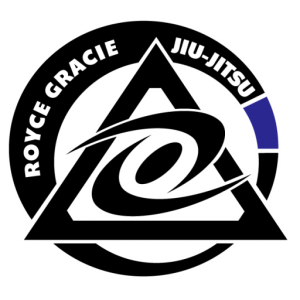
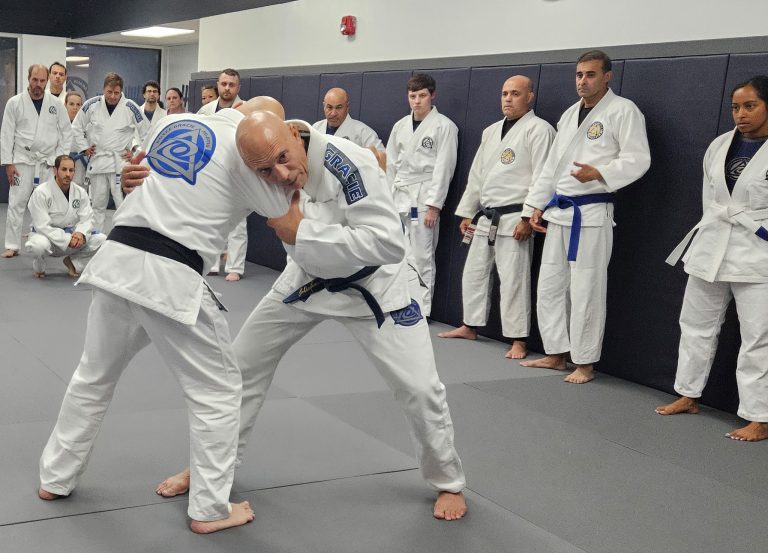
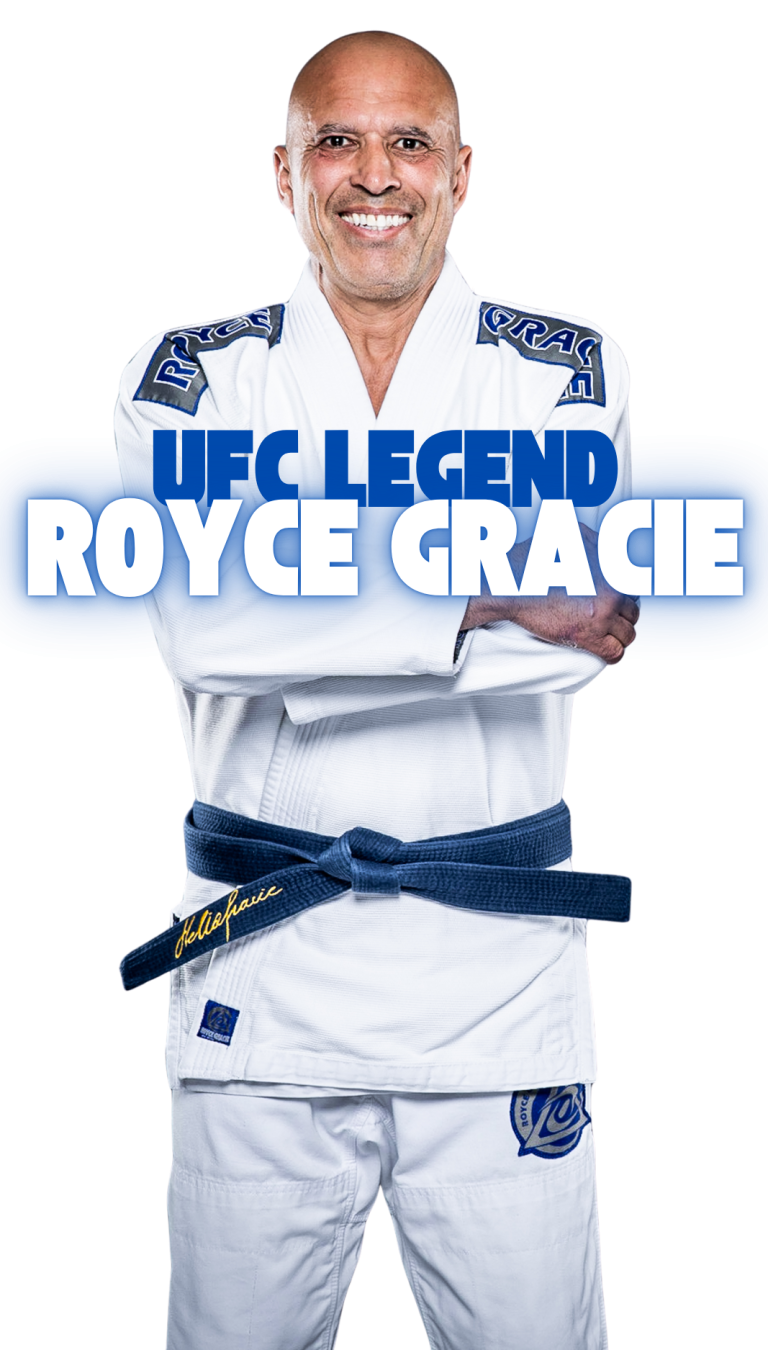
When most people think of Brazilian Jiu-Jitsu today, they picture the dynamic sport grappling seen in IBJJF competitions—berimbolo sweeps, inverted guards, and complex leg lock sequences. While these modern developments have pushed the technical boundaries of grappling as a sport, they’ve also created a widening gap between competition BJJ and practical self-defense. To understand what makes effective self-defense jiu-jitsu, we need to return to the source: the system developed and proven by Royce Gracie and the Gracie family.
Royce Gracie’s jiu-jitsu wasn’t developed in the controlled environment of tournament mats with weight classes, time limits, and cooperative training partners.
It was forged through decades of vale tudo (anything goes) matches in Brazil, where the Gracie family regularly faced larger, stronger opponents from various martial arts backgrounds—often with no rules, no weight classes, and real consequences for failure.
When Royce entered the octagon at UFC 1 in 1993, he wasn’t demonstrating a theoretical system. At 176 pounds, he was the smallest competitor in the tournament, facing opponents who outweighed him by 50-100 pounds, including a 400-pound sumo wrestler and accomplished strikers.
His systematic dismantling of these opponents—using fundamental positional control, effective striking defense, and high-percentage submissions—proved what the Gracie family had known for decades: properly applied jiu-jitsu neutralizes size, strength, and aggression.
This wasn’t a lucky tournament run. Royce went on to win UFC 2 and UFC 4, and fought to a draw with Ken Shamrock in a 36-minute superfight. His performance under the most realistic fighting conditions possible validated the self-defense principles at the core of Brazilian Jiu-Jitsu.
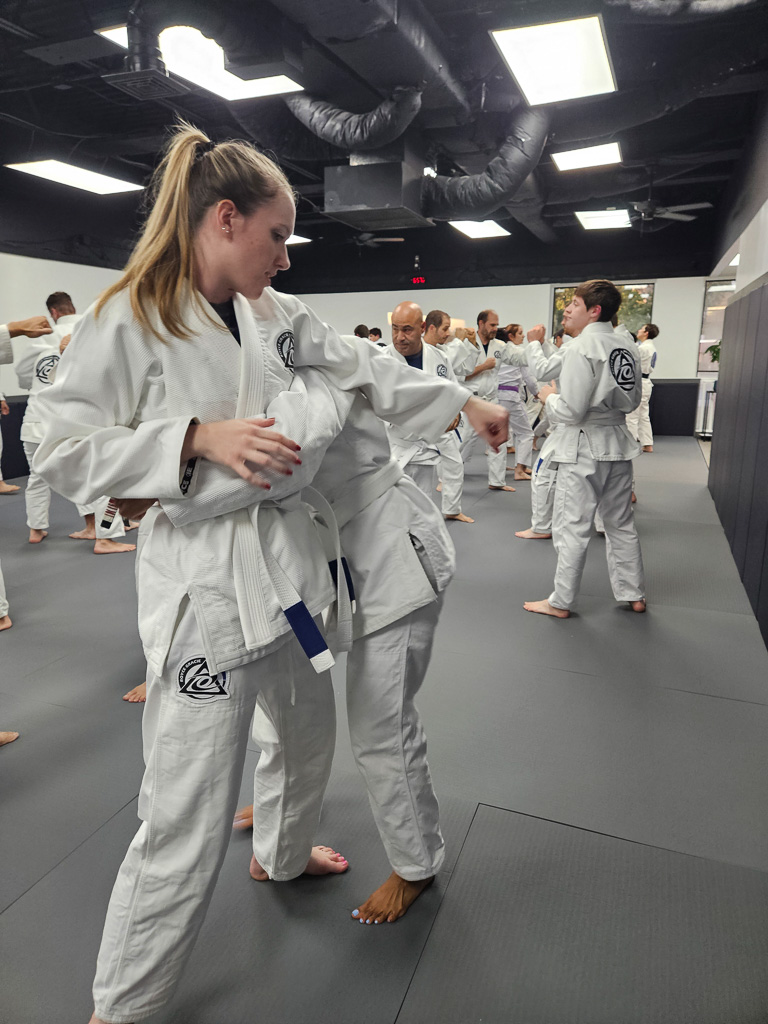
The first critical difference between Royce Gracie’s jiu-jitsu and both modern sport BJJ and traditional martial arts is its approach to distance management.
Most martial arts operate under the false assumption that you can maintain distance from an aggressor—that you’ll have space to execute your techniques.
Royce Gracie’s system acknowledges a fundamental truth about real violence: most attacks happen at close range, often initiated by surprise. Rather than attempting to maintain distance (which requires you to be faster and more athletic than your attacker), the Gracie system teaches practitioners to close distance safely, establish the clinch, and take the fight to the ground on their terms.
This is radically different from modern sport BJJ, where practitioners often start from their knees or immediately pull guard—positions that would be disastrous against a standing attacker who could kick or stomp.
It’s also different from striking arts like boxing or Muay Thai, which require you to exchange strikes at a distance where the bigger, stronger, or more athletic opponent has significant advantages.
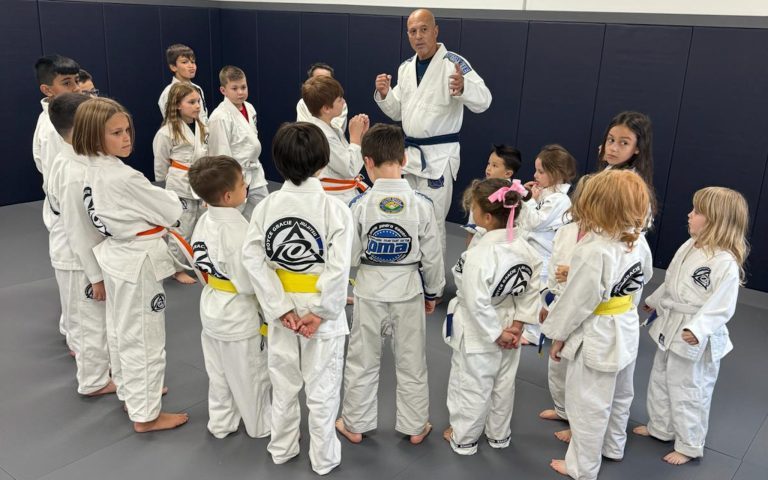
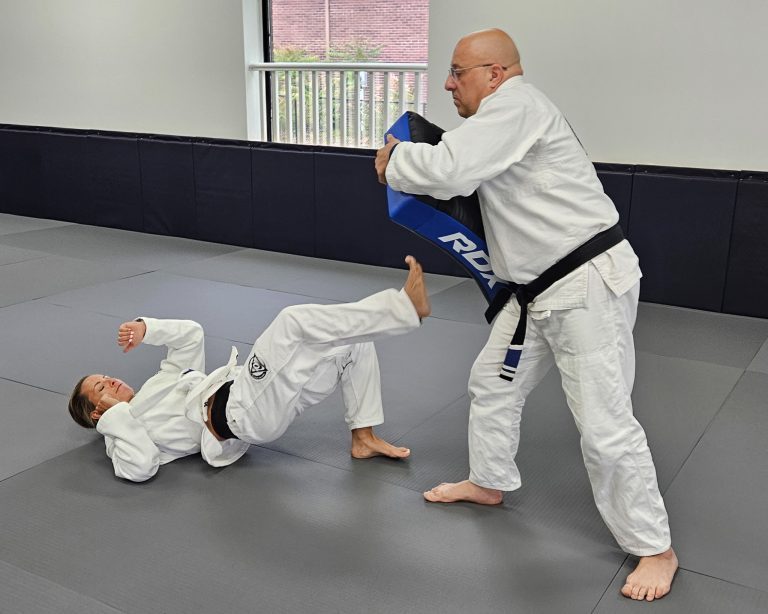
The core of Royce Gracie’s jiu jitsu is the positional hierarchy: a clear, systematic progression from inferior to superior positions.
This hierarchy—starting from survival positions like defending the mount or back control, through neutral positions like the guard, to dominant positions like mount, back, and side control—provides a roadmap for every possible ground scenario.
What makes this superior for self-defense is its focus on control before submission. Modern sport BJJ often emphasizes submission hunting, sometimes at the expense of positional dominance.
Competitors might attempt flying armbars, sacrifice throws, or leg locks from positions that offer little control.
In competition, if these fail, you simply lose points or the match resets. On the street, these gambles could leave you on the bottom beneath a larger attacker or in a vulnerable position where the opponent’s friends could kick you in the head.
Royce’s approach prioritizes establishing dominant position first—where you can control your opponent, minimize damage to yourself, and safely work toward a finish.
This isn’t just more reliable; it’s essential when facing multiple attackers, weapons, or unpredictable variables like concrete surfaces and environmental hazards.
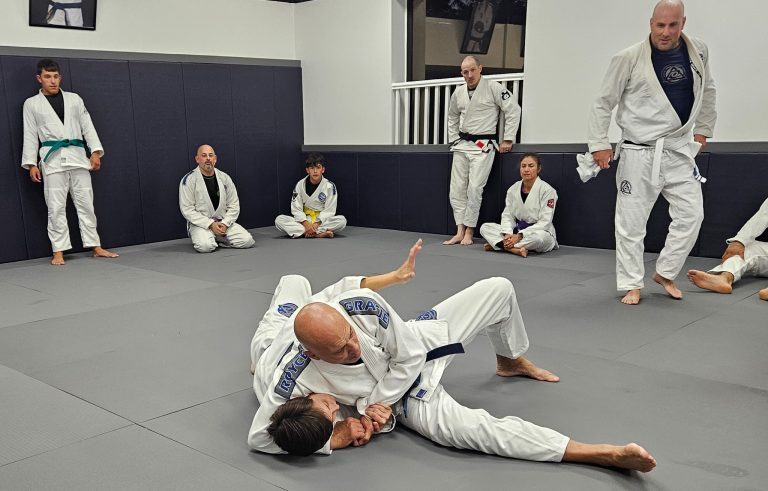
Perhaps no aspect of jiu-jitsu has diverged more from its self-defense roots than the guard. In Royce Gracie’s system, the guard is primarily a defensive position—your last line of defense when taken down or when you’ve failed to achieve top position. From guard, the priorities are: protect yourself from strikes, control distance and posture, and sweep to achieve top position.
Modern sport BJJ has transformed the guard into an offensive position, with practitioners willingly pulling guard and attempting submissions from bottom. This has led to incredible technical innovations—50/50 guard, De La Riva variations, and complex guard systems that can be highly effective in sport competition.
But in a self-defense context, these developments miss the point. Being on your back, even in a “good” guard, means you can’t escape, you’re vulnerable to strikes (especially from additional attackers), and you’re fighting against fundamental leverage disadvantages. Royce’s jiu-jitsu teaches you to be dangerous from guard when necessary, but never to prefer it over top position.
Royce Gracie’s fights were often long, grinding affairs. His match with Kimo Leopoldo at UFC 3 lasted over 15 minutes and was so exhausting that Royce couldn’t continue in the tournament. But he won because his jiu-jitsu emphasized energy efficiency—using structure, leverage, and weight distribution to control larger opponents without relying on strength or athletic explosiveness.
This principle is crucial for self-defense. In a real altercation, you don’t know how long you’ll need to survive. You might be injured, exhausted from running, or facing multiple opponents. Techniques that require significant strength, speed, or flexibility might work in your 20s when you’re fresh, but fail when you’re older, tired, or caught off-guard.
The fundamental techniques Royce used—trap and roll escape from mount, scissor sweep, Americana from mount, rear naked choke—are all based on mechanical advantage rather than attributes. A 50-year-old woman can successfully execute these techniques against a larger, stronger attacker if she understands the principles.
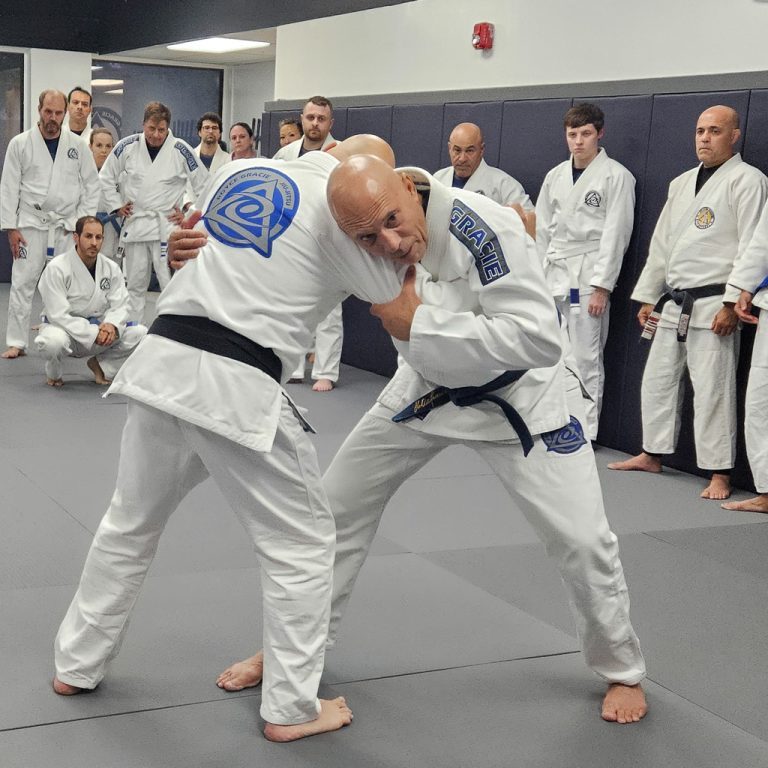
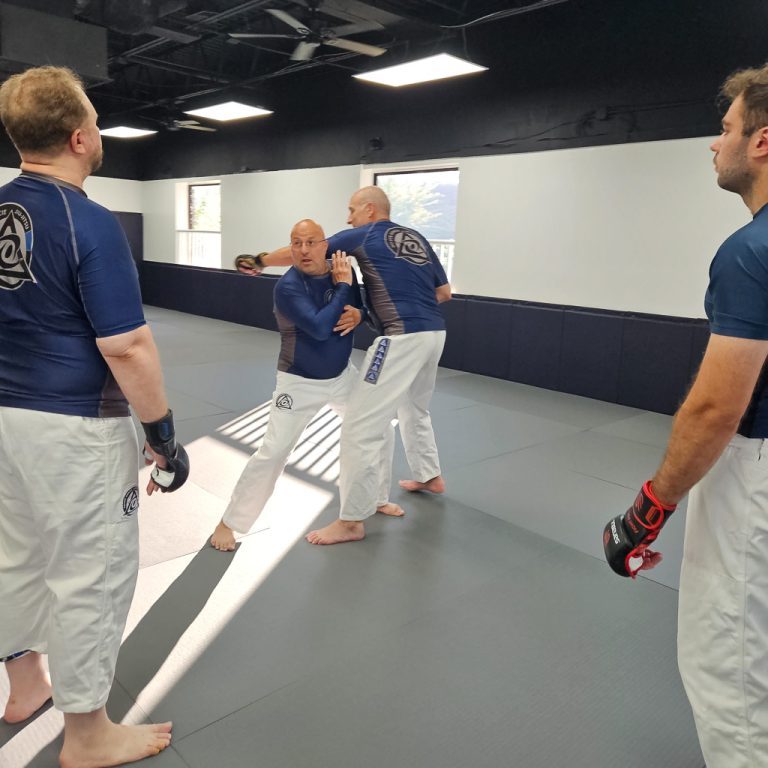
Modern Brazilian Jiu-Jitsu has evolved into an incredibly sophisticated sport, but this evolution has come with trade-offs that make it less effective for self-defense:
Starting Positions: Sport BJJ often begins from the knees or with both competitors seated. This makes no sense in self-defense, where you need to deal with a standing attacker and avoid being on the ground at all if possible.
Guard Pulling: Intentionally going to your back might be a valid strategy when you’re matched against a similar-sized opponent on padded mats with no strikes allowed. Against a larger street attacker on concrete, it’s potentially suicidal.
Complex Techniques: Modern BJJ rewards innovation and complexity. Techniques like the berimbolo or tornado guard are impressive and effective in competition, but they require specific grips (usually on the gi), significant flexibility, and extensive drilling against prepared opponents. In a self-defense scenario with unpredictable clothing, limited space, and a potentially armed attacker, these techniques are impractical at best.
Points Over Finishes: Sport BJJ scoring encourages accumulating positional points rather than finishing fights. This can lead to a mentality where practitioners are satisfied with achieving a position briefly rather than maintaining control and ending the threat decisively.
Neglect of Striking Defense: Because punches aren’t allowed in most BJJ competitions, many modern practitioners have significant gaps in their striking defense. They might pull guard into punches, keep their hands in positions that leave them exposed to strikes, or attempt techniques that work against pure grapplers but leave them vulnerable to punches.
Royce Gracie’s brazilian jiu jitsu, by contrast, was developed with strikes always in mind. The Gracie Academy still teaches self-defense techniques starting from common attacks—punches, chokes, grabs—and emphasizes closing distance safely, clinching effectively, and controlling opponents in ways that prevent them from generating power in their strikes.
The early UFCs definitively answered the question of grappling versus striking in a way that decades of martial arts movies and traditional dojo training never could. Royce’s victories over boxers, kickboxers, and karate practitioners demonstrated several key advantages of jiu-jitsu:
Range Closing: Strikers need distance to generate power. Jiu-jitsu teaches systematic ways to close that distance while protecting yourself. Once in the clinch, the striker’s primary tools are largely neutralized.
Ground Fighting: Most striking arts have little to no ground fighting curriculum. Once the fight goes to the ground—which grappling experts can force reliably—strikers are in completely unfamiliar territory. The fight isn’t over; it’s just moved to where the jiu jitsu practitioner has overwhelming advantage.
Efficiency: Striking requires you to be faster, more powerful, or more precise than your opponent. Royce’s jiu jitsu worked regardless of these attributes. You don’t need to be faster or hit harder; you need to understand leverage and position.
Control: Strikes can be effective, but they don’t control your opponent. You might knock someone down with a punch, but they can get back up, run away, or their friends can join in. Jiu jitsu’s emphasis on control means you can neutralize the threat completely, hold it there, and de-escalate or wait for help.
That said, modern MMA has shown that high-level strikers with takedown defense can be effective. But this doesn’t invalidate Royce’s jiu-jitsu—it confirms it. Today’s MMA fighters all train jiu-jitsu or submission grappling precisely because Royce proved you can’t compete without it. The question for self-defense isn’t whether striking is useless (it’s not), but whether you can rely on it exclusively. History says no.
Wrestling and Judo are both highly effective martial arts, and wrestlers in particular have proven to be tough opponents for BJJ practitioners, even in early UFCs. However, Royce Gracie’s jiu-jitsu offers several advantages for self-defense:
Submission Focus: Wrestling’s goal is pinning; Judo’s goal is the throw. Both are effective for establishing control, but neither emphasizes finishing the fight through submission. In self-defense, controlling someone isn’t enough—you need to be able to end the threat decisively. Royce’s jiu-jitsu teaches not just takedowns and top control, but the systematic dismantling of your opponent’s ability to resist through joint locks and chokes.
Ground Fighting Sophistication: While Judo includes newaza (ground techniques), it’s de-emphasized in sport Judo due to rule changes that heavily favor standing techniques. Wrestlers are excellent at achieving and maintaining top position but historically had limited submission skills. Royce’s jiu jitsu is primarily a ground fighting system with sophisticated position transitions and submission sequences that exceed what these arts traditionally offer.
Defense from Bottom: This is perhaps the most critical difference. Wrestlers are taught that being on their back is the worst position possible—which is true in wrestling, where it means you’re pinned. Judo similarly doesn’t emphasize fighting from your back. But in a real fight, you might end up on your back despite your best efforts. Royce Gracie’s jiu-jitsu gives you sophisticated tools to survive and even thrive from bottom positions—to defend, escape, sweep, or submit from guard.
No Gi Applicability: Judo relies heavily on gi grips for throws and control. Royce’s jiu jitsu, while often trained in the gi, translates completely to no-gi situations. The fundamental positions and submissions work regardless of clothing.
The most compelling evidence for Royce Gracie’s jiu jitsu against other grappling arts is again historical. Multiple high-level wrestlers and judoka entered early UFC tournaments. Dan Severn, an accomplished wrestler, submitted to Royce’s triangle choke at UFC 4. Olympic judoka Remco Pardoel was submitted by Royce at UFC 2. The jiu jitsu practitioners had tools their opponents simply didn’t understand.
Traditional martial arts like Kung Fu, Aikido, and traditional Karate face a fundamental problem: they’re often designed around principles and techniques that have never been tested in uncooperative, full-resistance situations. Many traditional techniques rely on an opponent attacking in specific, unrealistic ways, then freezing or complying while the defender executes their technique.
Royce Gracie’s jiu-jitsu is the opposite. Every technique is designed to work against a fully resisting, non-compliant opponent who is actively trying to hurt you. This is because it was developed through challenge matches and vale tudo fights where compliance wasn’t an option.
When traditional martial artists entered the early UFCs, the results were often one-sided. Royce’s match against Art Jimmerson (a boxer who wore one boxing glove) ended in a tap out. His fight against Keith Hackney (a Taekwondo practitioner) ended in submission. The pattern repeated across martial arts: without alive training against resisting opponents, techniques crumble under pressure.
This doesn’t mean traditional martial arts have no value—many have excellent conditioning, philosophical frameworks, or cultural significance. But for practical self-defense against a violent attacker, they lack the pressure-testing and realistic training methodology that defines Royce Gracie’s jiu jitsu.
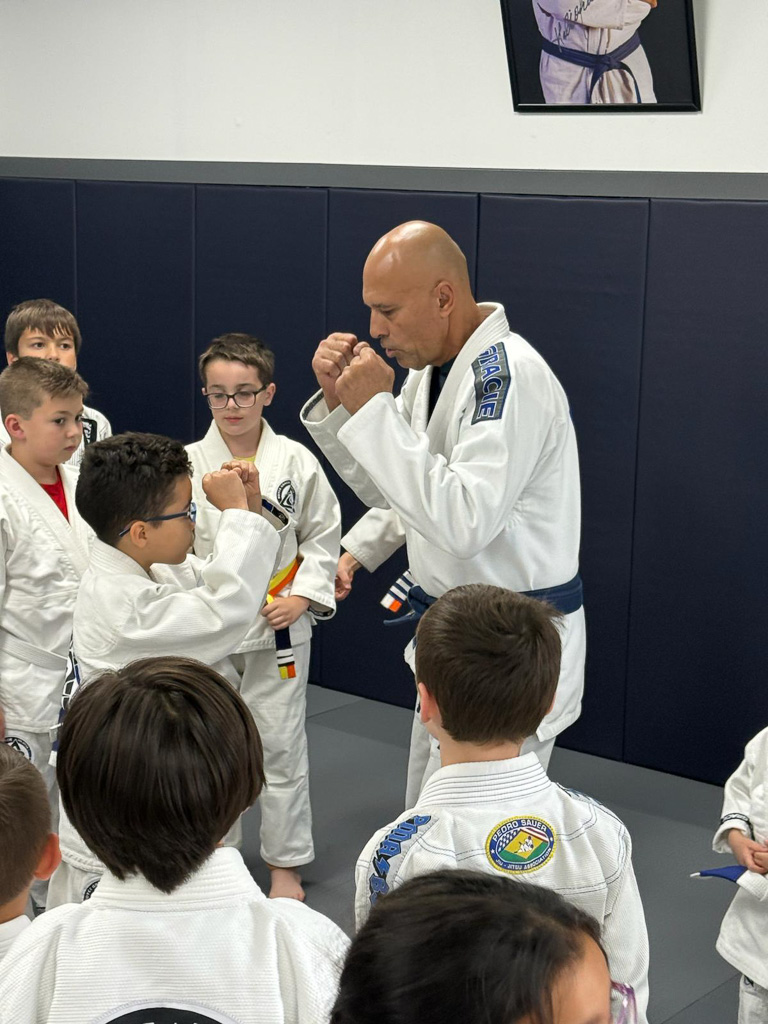
Beyond specific techniques, Royce Gracie’s jiu-jitsu offers a superior training methodology for self-defense:
Alive Training: Gracie Jiu-Jitsu emphasizes sparring (rolling) against resisting opponents from the beginning. This means every technique you learn is immediately tested against someone trying to prevent it. Compare this to martial arts where techniques are practiced on compliant partners or in kata/forms. The difference in practical application is enormous.
Scalable Resistance: In jiu-jitsu, you can train at various intensity levels. You can practice new techniques with cooperative partners, drill against progressive resistance, or test yourself in hard sparring. This allows safe, realistic training that develops actual skill under pressure.
Technique Over Attributes: While strength and athleticism help, Royce Gracie’s jiu jitsu is designed so smaller, weaker practitioners can defeat larger opponents. This makes it accessible to people of all sizes, ages, and athletic abilities. A 60-year-old can still effectively apply an armbar or rear naked choke.
Proven Under Pressure: Because jiu-jitsu training regularly includes full-resistance sparring, practitioners develop the ability to remain calm under pressure, problem-solve in real-time, and execute techniques when exhausted or disadvantaged. These psychological attributes are as important as technical knowledge in real self-defense situations.
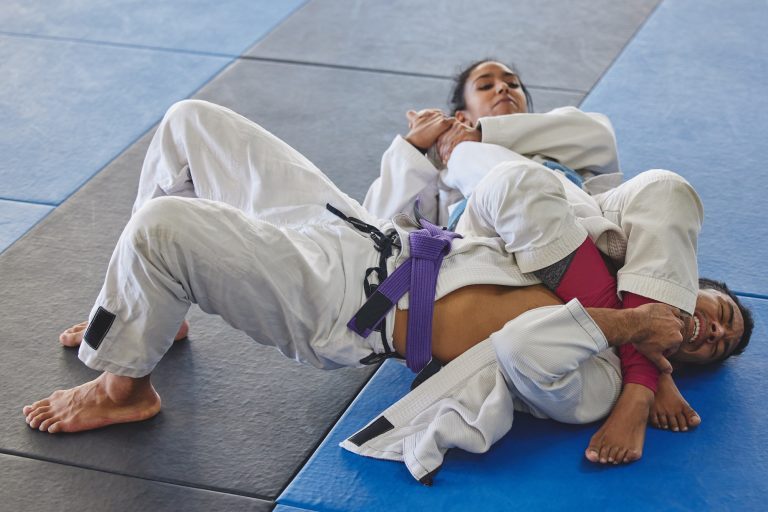
Ultimately, arguments about martial arts effectiveness are settled not by theory but by results. Royce Gracie’s jiu jitsu has the most compelling track record of any martial art in modern times:
When the first UFC happened, it was a question: “What martial art is most effective?” After Royce Gracie’s performances, it became a statement: “You need jiu jitsu to compete.” That transformation happened because the system worked, repeatedly, against diverse opponents, under conditions as close to real fighting as sport allows.
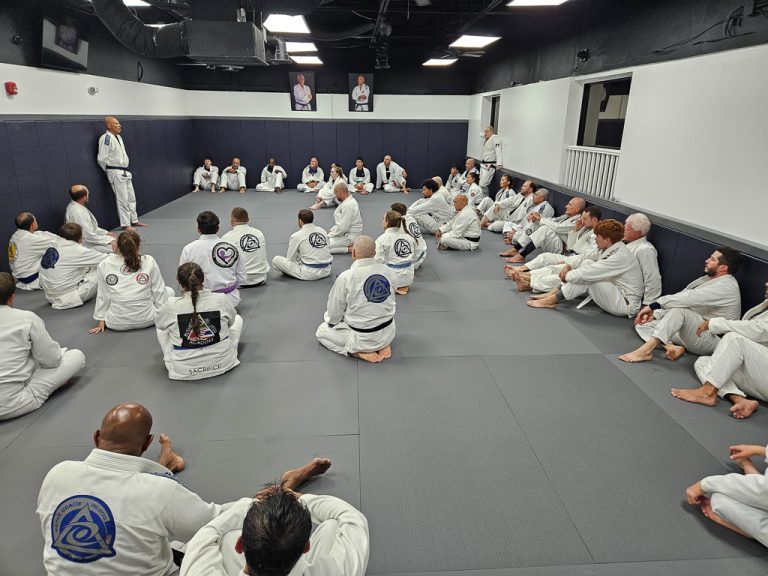
The martial arts world has always been full of claims and counterclaims about effectiveness. What made Royce Gracie’s jiu jitsu revolutionary was that it moved beyond claims to proof. It didn’t just work in the controlled environment of the Gracie Academy in Brazil—it worked on the world stage, against elite athletes from diverse martial arts backgrounds, in front of millions of viewers.
Modern Brazilian Jiu-Jitsu has evolved into an amazing sport with incredible technical depth. But in doing so, it has drifted from its self-defense roots. The fundamental principles that allowed a 176-pound Royce Gracie to defeat opponents nearly twice his size—distance management, positional hierarchy, control before submission, energy efficiency, and alive training—remain the gold standard for practical self-defense.
For someone interested in self-defense rather than sport competition, returning to these roots through Royce Gracie’s system offers the most reliable, proven, and effective approach. It’s not the flashiest art, and it won’t make you invincible. But it will give you the best chance of protecting yourself and your loved ones when it matters most.
And in self-defense, that’s all that counts.
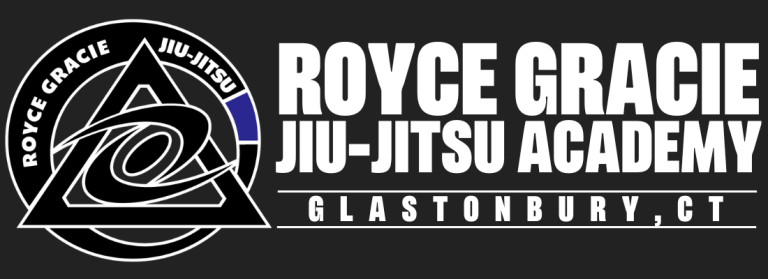
107 Oakwood Drive
Glastonbury, Connecticut 06033
© 2025 · ROYCE GRACIE JIU JITSU ACADEMY OF GLASTONBURY, CT